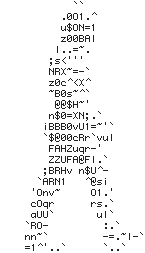DISCOVERY (1)
Little Green Men?
These radio signals were heard first in 1967. They were coming
from a point in the SKY where there was no known star. They were coming very regularly too: once in just about a second. It was as if they were cotrolled by a clock.
The scientists who heard the signals did not tell anybody else. They were rather afraid to tell in case they frightened people. The signals were coming from a very small body – no bigger, perhaps, than the earth. Was that why no light could be seen from it? Or were the signals coming from a planet that belonged to some other star?
There was no end to the questions, but the scientists kept the discussion secret. ‘Perhaps there are intelligent beings out there’, they thought:
“—Little Green Men who are trying to send messages to other planets, OR TO US!” So the news was not given to the newspapers. Instead, the scientists studied the signals and searched for others like them…
Well, all that happens in 1967 and 1968. Since then scientists have learnt more about those strange, regular, radio signals. And they have told the story, of course. The signals do not come from a planet; they come from a new kind of star called a “pulsar”. About a hundred other pulsars have now been found, and most of them are very like the first one.
Pulsars are strong radio stars. They are the smallest but the heaviest stars we know at present. A handful of pulsar would weigh a few thousand tons. Their light – if they give much light – is too small for us to see. But we can be sure of this:
No little green men are living on them.


















































































